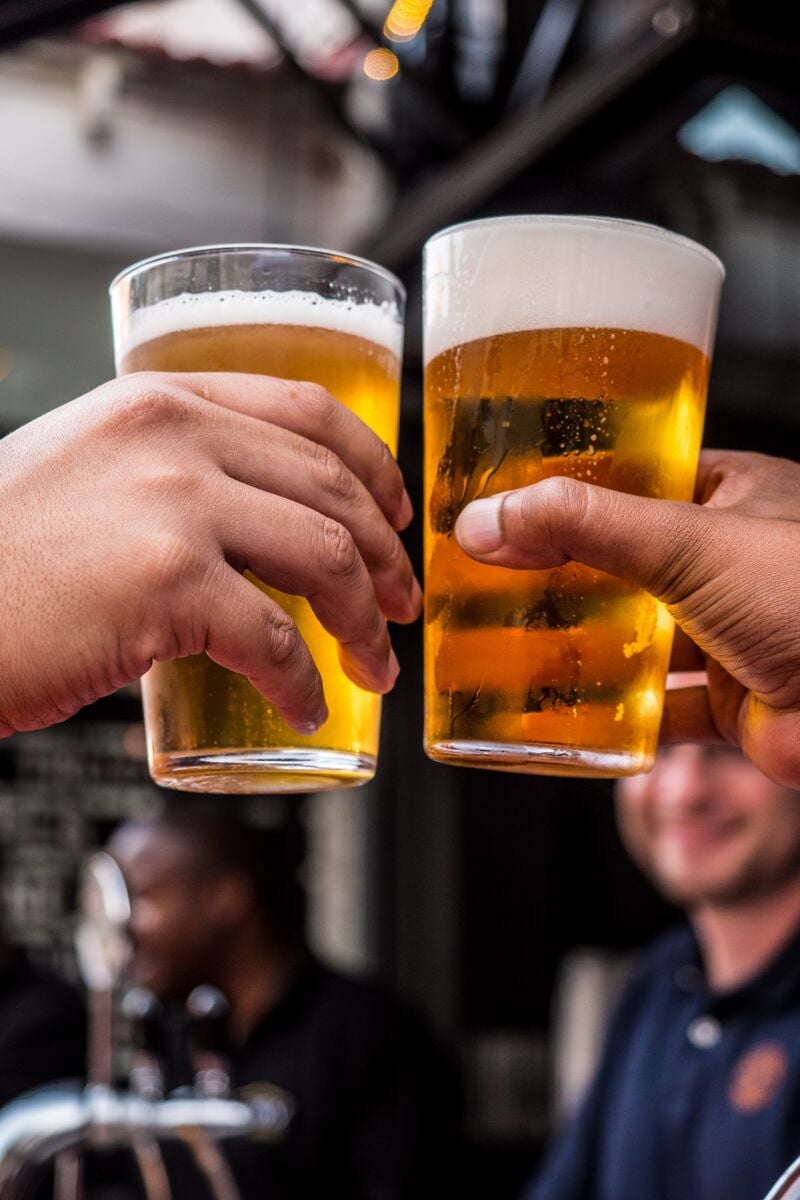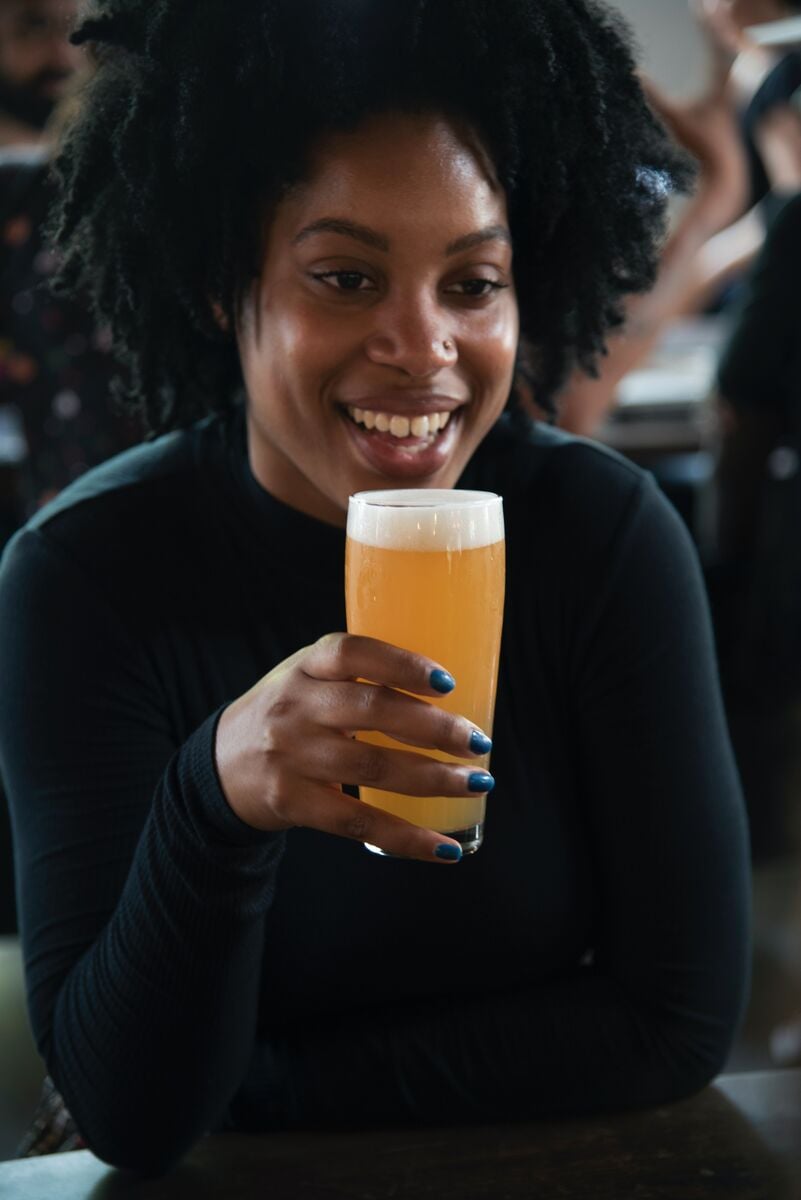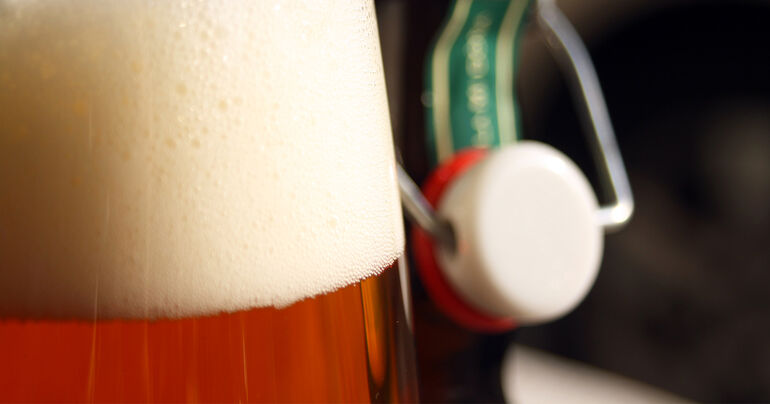Start 14-Day Trial Subscription
*No credit card required

The Bubbling Science of Beer Foam
Beer foam is extremely important to a perfect pint, but what exactly is its scientific genesis?
As babies, we blow snot bubbles. As toddlers, we blow soap bubbles on a sunny day, and splish-splash in bubble baths. Naturally, as adults, the joy of bubbles transfers to the most adult of all joys – beer. Magical as those bubbles may seem, they don’t just pop out of thin air. There’s hard science backing up how beer foam forms. So what exactly is the business behind the fizziness?
What’s In a Bubble?
Step one to bringing bubbles into adult comprehension is understanding the process. Beer contains gas – usually carbon dioxide, but sometimes nitrogen, which remains under a stable amount of pressure in a closed container like a bottle or can. The magic of the bubbling process, or “nucleation” process, begins when you open your beer.
Opening a beer causes a rapid drop in pressure, which encourages carbon dioxide dissolved within the beer to make its escape. The bubbles are encouraged by microscopic cheerleaders known as nucleation points – imperfections in the bottom and sides of the beer container where CO2 gathers – until they reach a critical volume and detach, rising to the top of the container. If you’ve ever seen a star or logo etched in the bottom of a glass, they are there to serve as nucleation sites for the beer.
Interestingly, when bubbles are alone, they will always revert to a spherical shape, because spheres are the shape with the least surface area, requiring the least amount of energy to maintain. If bubbles begin to stack, they will take a cube shape, as this becomes the new “path of least resistance.” Structural integrity becomes important as bubbles begin to form the head, as the more stability the bubbles have, the more robust the head will be.

Keep Your Head Up
As you’ve undoubtedly noticed, no two beers form the same kind of head. While there are a variety of factors, both internal and external, which inform foaminess, perhaps the most important player is Lipid Transfer Protein 1 (LTP1), occurring naturally in barley. LTP1 is highly hydrophobic, meaning it doesn’t like to mix with water. In beer, LTP1 seeks out CO2 as a byproduct of fermentation, and ends up riding the bubble to the surface, where it forms a coat around every bubble. You could almost think of it as an extra layer of bubble protection, resulting in a stabilized, longer-lasting head.
Chemists have identified a few other proteins with similar effects, namely hordein and the intriguing “protein Z,” but among the more prominent “foam positive agents” in beer are proteins called albumins, which form complex bonds with bitter-hop compounds – the iso-alpha acids. This is why you’re more likely to find heavy lacing in heavily hopped beers, and why they often retain their heads longer.
The pH of a beer is also important. A study by Karl Siebert, director of Cornell University’s brewing program, found that “beer with a higher pH, around 4.6, would likely have better foam than beer at a lower pH, such as 3.8.”
Siebert also found that an alcohol level of around 5% is ideal for maintaining a frothy head, though previous studies have offered conflicting results. A recap of your drinking experiences will likely corroborate Siebert’s findings. Showstopper quads and stouts in the 12% range along with light beers generally don’t seem to come with long-lasting heads, which is at least partially due to their relative alcohol levels.

Beer contains gas – usually carbon dioxide, but sometimes nitrogen, which remains under a stable amount of pressure in a closed container like a bottle or can. The magic of the bubbling process, or “nucleation” process, begins when you open your beer.
Gas, bitter compounds, pH, alcohol and foam-positive proteins: these five factors and their interaction form the foundation for how pillowy a beer’s head will be. Those are more or less out of your control, but there are some things you can do to ensure you enjoy the full frothy glory of your suds. As you know, a good head isn’t just for show. It preserves and enhances flavor and affects the “trigeminal sensation” – a fancy way of saying the mouthfeel – associated with drinking beer. So what can you do to get the softest, creamiest beer possible?
For one, make sure your glassware is “beer clean” -- totally free of any dirt, grime, grease or residual cleaning agents. This ensures nothing will neutralize your foam or create unwanted nucleation points that lead to loss of head. Also be aware that grease from food, lipstick or lip balm can affect your beer’s head. To achieve the industry standard beer clean glass, follow these steps:
1. Wash the glass in warm, sudsy water.
2. Rinse it in clean water.
3. Let the glass air-dry upside down on a rack.
Temperature is also important, as it may affect bubble size and uniformity, which feed back into the overall mouthfeel. These factors are a large part of why nitro beers “feel” so good – the bubbles are small and even. Temperature will vary based on beer style, but as a broad rule, ice cold and room temperature will offer you the ideal experience from a beer foam standpoint.
The pour is also a crucial element to get the most of your beer’s foamability. Start gentle, with the classic 45-degree angle, and pour down the side. As you reach the final quarter of the pour, pour hard, straight down the middle, to encourage nucleation. In doing so, you’ve achieved a good balance between preservation and agitation of the beer’s available carbonation.
The ratio of soft pour to hard pour will again vary with beer style. Hefeweizens and wits generally benefit from a more vigorous pour, while stouts should be poured more conservatively – often meaning filling the glass halfway so you can top the head off continuously. And of course, with nitros, you go hard from the start.
There are times when you may not have everything you need for the perfect pour or times when drinking a beer straight out of the bottle just feels right. Some people enjoy the sensory experience that comes from a bottle, can or growler, and sometimes they’re simply more convenient. Many beers are actually intended to be enjoyed from the can or bottle. So, per usual, let the circumstances dictate what constitutes your peak drinking experience. But if you really want to bring out the best in a beer, a good pour is crucial to showcase one of the most notable – and interesting – elements of it: beer foam!




